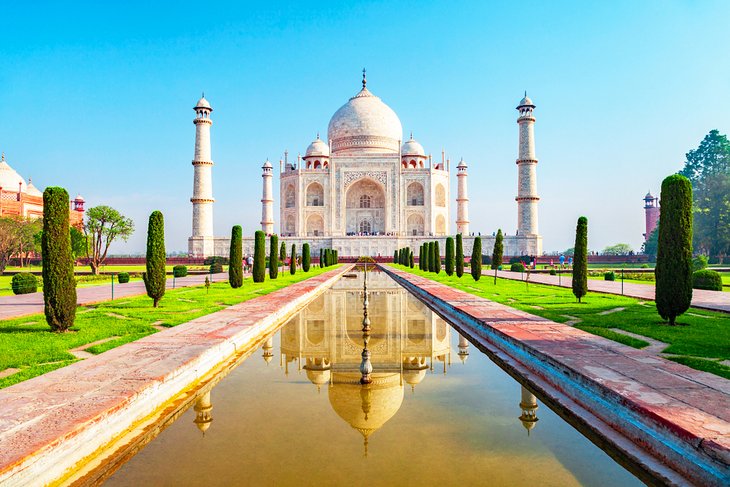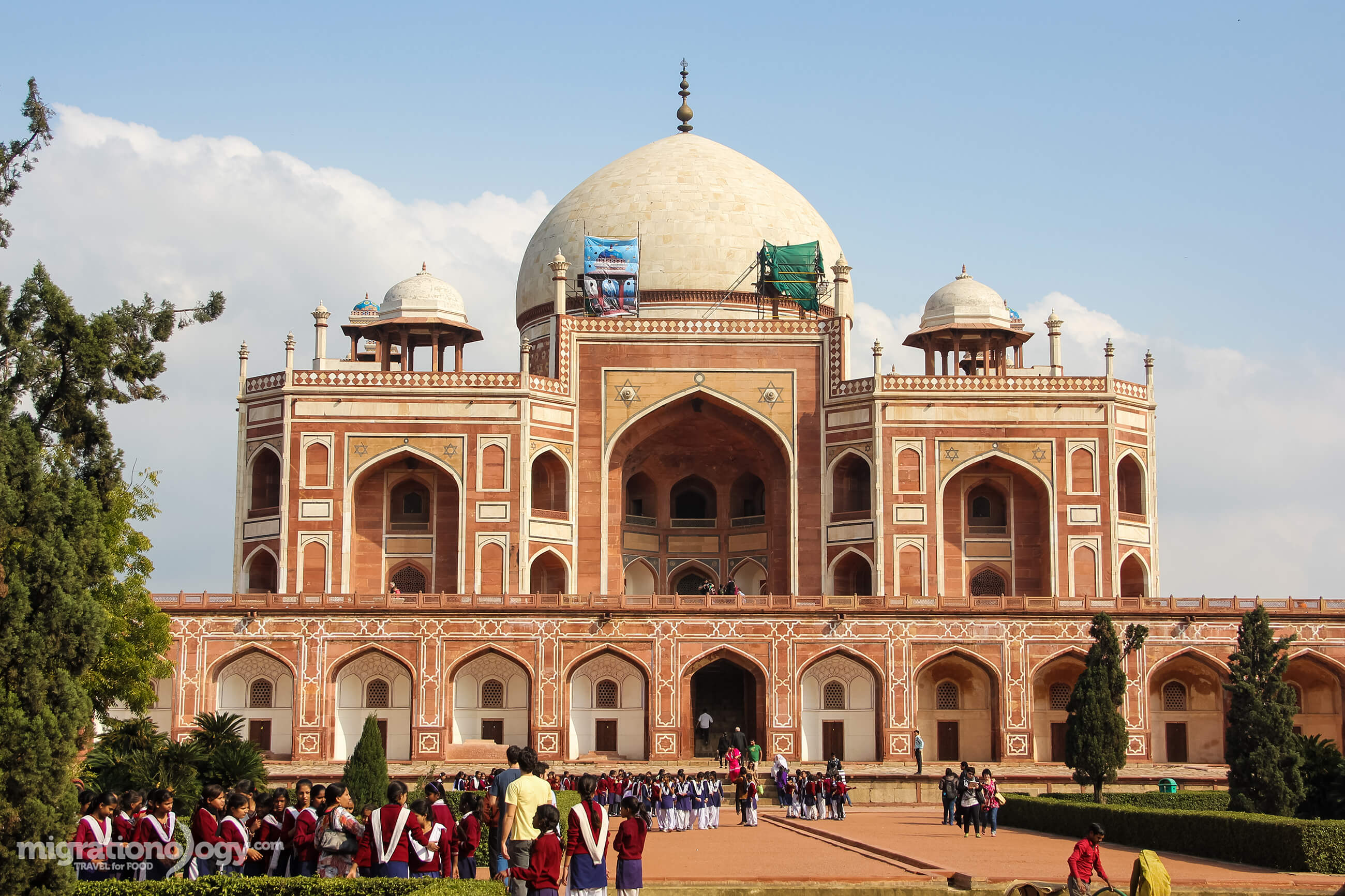
India, a land of vibrant colors, ancient history, and diverse cultures, is a sensory explosion waiting to be experienced. From the snow-capped Himalayas in the north to the sun-kissed beaches of the south, the vast and varied landscape offers a treasure trove of experiences for every traveler. This article serves as your comprehensive guide to exploring this incredible country, covering its top attractions, delving into its rich history, providing practical travel tips, outlining accommodation options, navigating transportation, and identifying the best time to visit.
Top Attractions: A Journey Through India’s Wonders
India’s iconic landmarks are more than just sights; they are gateways to understanding the country’s soul. Here are some must-visit attractions that showcase the breadth of India’s beauty and heritage:

Related Articles about Unveiling India: A Tapestry of Experiences:
- Canada: A Traveler’s Grand Tapestry – From Majestic Peaks to Coastal Charms
- Poland: A Journey Through History, Culture, and Untamed Beauty
- Bulgaria: A Jewel in the Balkans – Your Comprehensive Travel Guide
- India: A Traveler’s Guide to a Land of Infinite Wonders
- Indonesia: An Archipelago of Enchantment – Your Ultimate Guide to an Unforgettable Adventure
-
Taj Mahal, Agra: Arguably the most recognizable symbol of India, the Taj Mahal is a breathtaking ivory-white marble mausoleum built by Mughal emperor Shah Jahan in memory of his wife Mumtaz Mahal. Witnessing its ethereal beauty at sunrise or sunset is an unforgettable experience.
-
Golden Temple (Harmandir Sahib), Amritsar: The holiest shrine for Sikhs, the Golden Temple is a stunning spectacle of gold-plated domes and intricate architecture. The serene atmosphere, the communal kitchen serving free meals (langar), and the spiritual energy make it a deeply moving experience.
-
Varanasi, Uttar Pradesh: One of the oldest living cities in the world, Varanasi is a spiritual hub on the banks of the Ganges River. Witnessing the morning rituals, taking a boat ride along the ghats (riverfront steps), and experiencing the evening Aarti ceremony is a journey into the heart of Hinduism.

-
Kerala Backwaters: A network of serene lagoons, lakes, and canals, the Kerala Backwaters offer a tranquil escape into nature. A houseboat cruise through these waterways, lined with lush greenery and traditional villages, is a quintessential Kerala experience.
-
Hampi, Karnataka: A UNESCO World Heritage Site, Hampi is a captivating landscape of ancient ruins, temples, and boulder-strewn hills. The remnants of the Vijayanagara Empire, dating back to the 14th century, offer a glimpse into a glorious past.
-
Rajasthan Forts and Palaces: Rajasthan, the "Land of Kings," is renowned for its majestic forts and opulent palaces. Explore Amber Fort in Jaipur, Mehrangarh Fort in Jodhpur, Jaisalmer Fort in Jaisalmer, and City Palace in Udaipur to witness the grandeur of Rajputana royalty.
-
Ajanta and Ellora Caves, Maharashtra: These ancient rock-cut caves, adorned with intricate sculptures and paintings, represent a remarkable feat of Indian art and architecture. Ajanta caves are primarily Buddhist, while Ellora caves encompass Buddhist, Hindu, and Jain influences.
-
Khajuraho Temples, Madhya Pradesh: Famous for their intricate and erotic sculptures, the Khajuraho Temples are a UNESCO World Heritage Site showcasing the artistic prowess of the Chandela dynasty.
-
Goa Beaches: From the vibrant party beaches of North Goa to the serene shores of South Goa, Goa offers a diverse range of beach experiences. Enjoy swimming, sunbathing, watersports, and the laid-back Goan lifestyle.
-
National Parks and Wildlife Sanctuaries: India boasts a rich biodiversity and is home to numerous national parks and wildlife sanctuaries. Visit Jim Corbett National Park for tiger sightings, Kaziranga National Park for rhinos, and Ranthambore National Park for a chance to spot elusive leopards.
A Historical Tapestry: Unraveling India’s Past
India’s history stretches back millennia, leaving behind a rich tapestry of empires, cultures, and philosophies. Understanding this history enhances your appreciation for the country’s present-day complexities:
-
Indus Valley Civilization: One of the world’s earliest urban civilizations, the Indus Valley Civilization (c. 3300-1700 BCE) flourished in the Indus River valley. Sites like Mohenjo-daro and Harappa offer insights into their advanced urban planning and sophisticated culture.
-
Mauryan Empire: Under the rule of Emperor Ashoka (3rd century BCE), the Mauryan Empire unified much of the Indian subcontinent. Ashoka’s conversion to Buddhism and his promotion of peace and social welfare had a profound impact on Indian society.
-
Gupta Empire: Considered the "Golden Age of India" (4th-6th centuries CE), the Gupta Empire witnessed significant advancements in science, mathematics, literature, and art.
-
Mughal Empire: The Mughal Empire (16th-19th centuries CE) left an indelible mark on Indian culture, architecture, and cuisine. The Taj Mahal, Red Fort, and Humayun’s Tomb are testaments to their artistic legacy.
-
British Colonial Rule: From the 18th century, the British East India Company gradually gained control over India, eventually leading to British colonial rule. The Indian independence movement, led by Mahatma Gandhi, culminated in India’s independence in 1947.
Travel Tips for a Smooth Indian Adventure
Navigating India can be an overwhelming experience for first-time visitors. Here are some essential travel tips to ensure a smooth and enjoyable journey:
-
Visa Requirements: Ensure you have the necessary visa before traveling to India. Apply well in advance to avoid any last-minute complications.
-
Health and Safety: Consult your doctor regarding necessary vaccinations and malaria prophylaxis. Drink bottled water, eat at reputable establishments, and be mindful of food hygiene.
-
Dress Code: Dress modestly, especially when visiting religious sites. Cover your shoulders and knees.
-
Bargaining: Bargaining is a common practice in markets and bazaars. Don’t be afraid to negotiate the price.
-
Transportation: Plan your transportation in advance. Consider hiring a car with a driver for longer journeys or using trains for intercity travel.
-
Respect Local Customs: Be respectful of local customs and traditions. Avoid public displays of affection and be mindful of religious sentiments.
-
Learn Basic Phrases: Learning a few basic Hindi phrases can be helpful in communicating with locals.
-
Stay Connected: Purchase a local SIM card for easy access to internet and communication.
-
Be Aware of Scams: Be aware of common tourist scams and avoid engaging with suspicious individuals.
-
Pack Appropriately: Pack light, comfortable clothing, sturdy shoes, sunscreen, insect repellent, and a hat.
Accommodation Options: From Budget to Luxury
India offers a wide range of accommodation options to suit every budget and preference:
-
Budget Hotels and Guesthouses: These are the most affordable options, offering basic amenities and a comfortable stay.
-
Mid-Range Hotels: These hotels offer a good balance of comfort and affordability, with amenities like air conditioning, Wi-Fi, and breakfast.
-
Luxury Hotels and Resorts: These hotels offer a lavish experience with world-class amenities, fine dining, and impeccable service.
-
Homestays: Staying in a homestay offers a unique opportunity to experience local culture and hospitality.
-
Heritage Hotels: These hotels are often located in restored palaces and mansions, offering a glimpse into India’s rich history.
Transportation: Navigating the Indian Landscape
India offers a variety of transportation options, each with its own advantages and disadvantages:
-
Trains: The Indian Railways is one of the largest railway networks in the world, offering a convenient and affordable way to travel between cities.
-
Buses: Buses are a common mode of transportation, especially for shorter distances.
-
Flights: Domestic flights are a fast and convenient way to travel between major cities.
-
Taxis and Auto-Rickshaws: Taxis and auto-rickshaws are readily available in most cities. Negotiate the fare before starting your journey.
-
Rental Cars: Renting a car is an option, but it’s recommended to hire a driver as well, especially in unfamiliar areas.
Best Time to Visit: Planning Your Indian Getaway
The best time to visit India depends on the region you plan to explore:
-
North India (October to March): This is the ideal time to visit North India, including Rajasthan, Delhi, and Agra, as the weather is pleasant and cool.
-
South India (September to March): The winter months are the best time to visit South India, including Kerala, Tamil Nadu, and Karnataka, as the weather is mild and dry.
-
Himalayas (May to October): The summer months are the best time to visit the Himalayas, as the weather is warm and the snow has melted.
-
Monsoon Season (June to September): While the monsoon season can bring heavy rainfall, it also rejuvenates the landscape and offers a unique perspective on India’s beauty. However, be prepared for potential disruptions to travel plans.
Conclusion: Embrace the Indian Experience
India is a land of contrasts, a place where ancient traditions meet modern aspirations. From the majestic Himalayas to the tranquil backwaters, from the bustling cities to the serene villages, India offers a kaleidoscope of experiences that will captivate your senses and leave you with a lasting impression. By embracing the country’s rich culture, respecting its customs, and planning your trip carefully, you can unlock the magic of India and create memories that will last a lifetime. So, pack your bags, open your mind, and prepare to be amazed by the incredible journey that awaits you in India.





